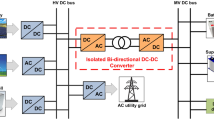Abstract
A fully integrated cross-coupled charge pump circuit for boosting dc-to-dc converter applications with four-clock signals has been proposed. With the new clock scheme, this charge pump eliminates all of the reversion power loss and reduces the ripple voltage. In addition, the largest voltage differences between the terminals of all transistors do not exceed the power supply voltage for solving the gate-oxide overstress problem in the conventional charge pump circuits and enhancing the reliability. This proposed charge pump circuit does not require any extra level shifter; therefore, the power efficiency is increased. The proposed charge pump circuit has been simulated using Spectre in the TSMC 0.18 μm CMOS process. The simulation results show that the maximum voltage conversion efficiency of the new 3-stage cross-coupled circuit with an input voltage of 1.5Vis 99.8%. According to the comparison results of the conventional pump and the enhanced charge pump proposed, the output ripple voltage has been significantly reduced.
Similar content being viewed by others
References
J. F. Dickson, “On–chip high–voltage generation in MNOS integrated circuits using an improved voltage multiplier technique,” IEEE J. Solid–State Circuits 11, No. 3, 374 (1976). DOI: 10.1109/JSSC.1976.1050739.
J. T. Wu and K.–L. Chang, “MOS charge pumps for low–voltage operation,” IEEE J. Solid–State Circuits 33, No. 4, 592 (1998). DOI: 10.1109/4.663564.
M.–D. Ker, S.–L. Chen, and C. S. Tsai, “Design of charge pump circuit with consideration of gate–oxide reliability in low–voltage CMOS processes,” IEEE J. Solid–State Circuits 41, No. 5, 1100 (2006). DOI: 10.1109/JSSC. 2006.872704.
H. Lee and P. K. T. Mok, “Switching noise and shoot–through current reduction techniques for switched–capacitor voltage doubler,” IEEE J. Solid–State Circuits 40, No. 5, 1136 (2005). DOI: 10.1109/JSSC. 2005.845978.
T. Das, S. Prasad, S. Dam, and P. Mandal, “A pseudo cross–coupled switch–capacitor based DC–DC boost converter for high efficiency and high power density,” IEEE Trans. Power Electronics 29, No. 11, 5961 (2014). DOI: 10.1109/TPEL.2014.2297972.
J.–Y. Kim, S.–J. Park, K.–W. Kwon, B.–S. Kong, J.–S. Choi, and Y.–H. Jun, “CMOS charge pump with no reversion loss and enhanced drivability,” IEEE Trans. Very Large Scale Integration Systems 22, No. 6, 1441 (2014). DOI: 10.1109/TVLSI.2013.2267214.
T. W. Mui, M. Ho, K. H. Mak, J. Guo, H. Chen, and K. N. Leung, “An area–efficient 96.5%–peak–efficiency cross–coupled voltage doubler with minimum supply of 0.8 V,” IEEE Trans. Circuits Systems II: Express Briefs 61, No. 9, 656 (2014). DOI: 10.1109/TCSII.2014.2331109.
Author information
Authors and Affiliations
Corresponding author
Additional information
Original Russian Text © M. Ma, X. Cai, J. Jiang, Y. Sun, 2018, published in Izvestiya Vysshikh Uchebnykh Zavedenii, Radioelektronika, 2018, Vol. 61, No. 12, pp. 710–717.
This work was financially supported by the Provincial Natural Science Project, Hunan Province (No. 2015JJ3126).
About this article
Cite this article
Ma, M., Cai, X., Jiang, J. et al. High Efficiency Cross-Coupled Charge Pump Circuit with Four-Clock Signals. Radioelectron.Commun.Syst. 61, 565–570 (2018). https://doi.org/10.3103/S073527271812004X
Received:
Revised:
Accepted:
Published:
Issue Date:
DOI: https://doi.org/10.3103/S073527271812004X




